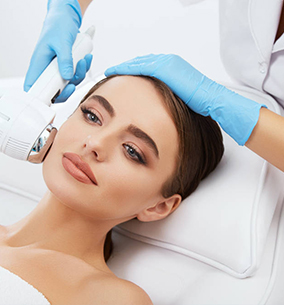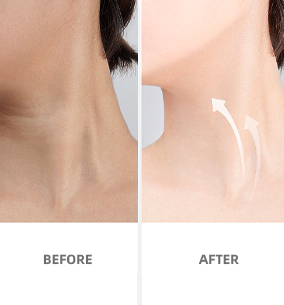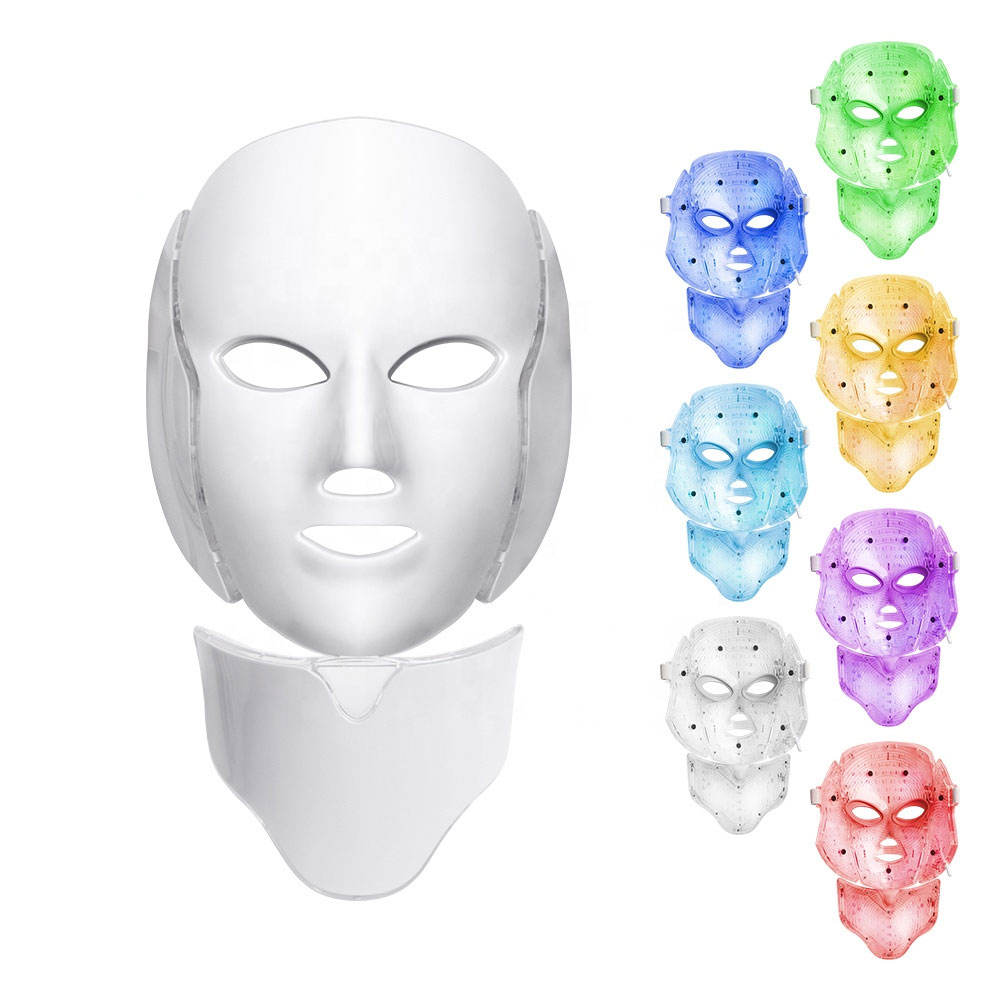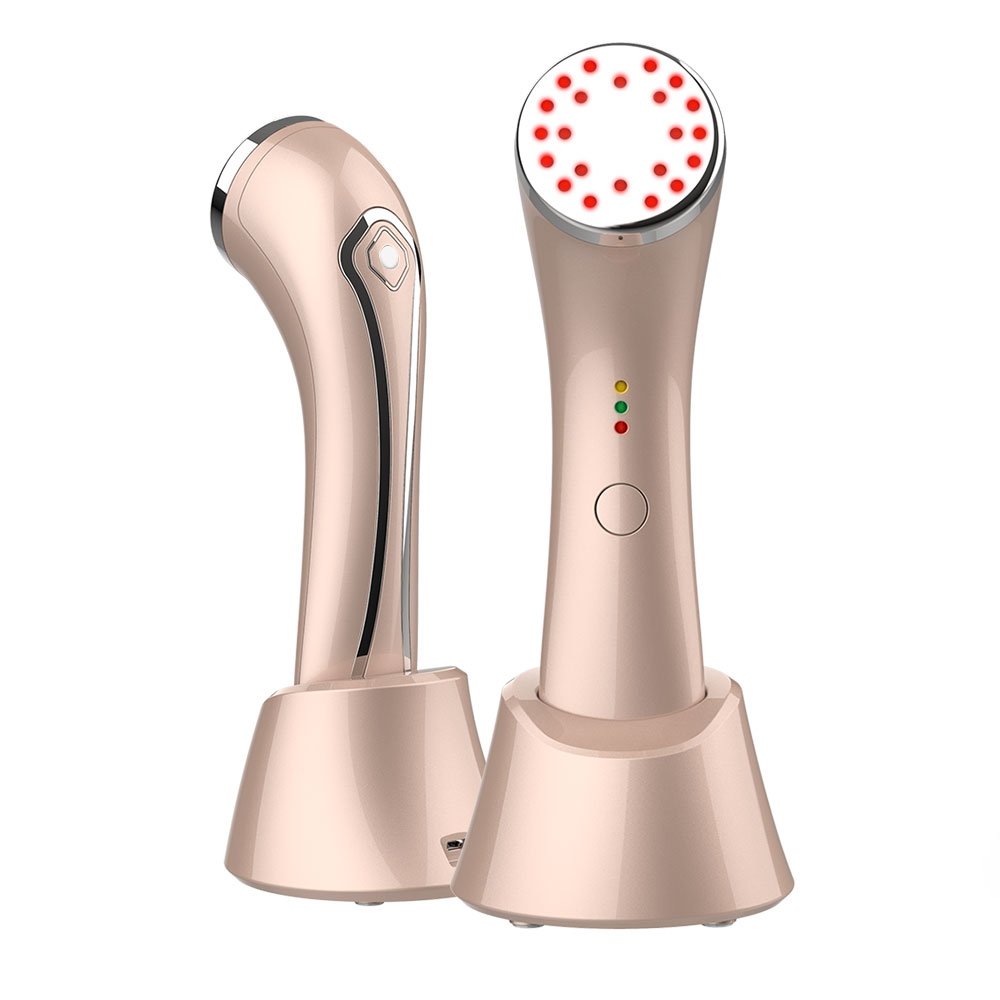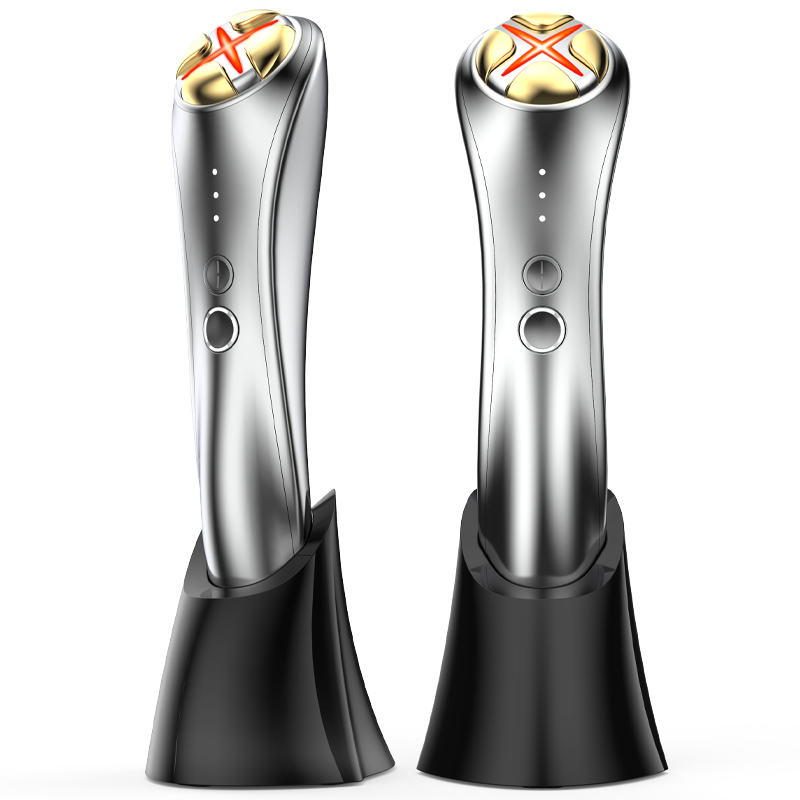Skin Rejuvenation Devices
Our Skin Rejuvenation devices Category offers a range of high-quality beauty equipment for home use that helps rejuvenate your skin. Our products are designed to help you look and feel your best.
Our products are designed to be easy to use and effective. They are perfect for those who want to take care of their skin in the comfort of their own home. If you have any questions or need help choosing the right product for your needs, please don’t hesitate to reach out to us. We’re always here to help!
The ageing process, sun exposure, skin disorders, and genetic inheritance are a few of the variables that can cause skin abnormalities on the face and other body regions. These abnormalities include pigmentation changes like freckles, sunspots, or visible blood vessels, as well as texture changes like wrinkles and acne scars. Furthermore, as we age, our skin may lose its youthful radiance, firmness, and suppleness. To address the different types of skin damage, there are many treatment methods available, like skin rejuvenation devices.
Various techniques, including chemical peels, laser resurfacing, mechanical resurfacing, and injectable treatments, can improve the look of fine lines and wrinkles on the face as a whole or in particular regions like the upper lip and the area surrounding the eyes.
In addition to treating pigmentation issues like sunspots and age spots, these therapies can also be used to treat acne scars and other skin diseases. Follow us for more information about skin rejuvenation devices.
Guide to buying skin rejuvenation products
A multitude of diseases resulting from ageing and skin degradation can be successfully treated with skin rejuvenation devices and resurfacing procedures.
It's critical to understand that every patient is different and will exhibit a particular combination of inherited and environmental ageing indicators in their skin. As a result, there are several different ways to address these issues, so it's critical to speak with a board-certified plastic surgeon to determine which course of action is best for you given your unique circumstances and preferences.
What are skin rejuvenation devices, and how do they work to improve skin health and appearance?
Here are some other methods to characterise skin resurfacing and rejuvenation devices therapy:
- Intense Pulse Light (IPL) and Laser Treatments: Used to tighten sagging skin and treat discoloration.
- Chemical Peels: To remove damaged outer skin layers, various acid peels are used in different combinations.
- Ablative laser treatments (fractional, CO2 lasers): These procedures smooth out wrinkles and creases by removing the outer layers of skin.
- Mechanical Ablation: surgical procedures of scraping the skin surface to soften abnormalities (dermabrasion, dermaplaning).
- Non-Ablative Treatments (Light Acid Peels, Microdermabrasion, and Microneedling): These minimally invasive sanding techniques are intended to cure minor discolorations and scars. Dermal fillers are injectable substances that improve the contouring of the skin.
- Botulinum Toxin Type a Treatments: Prevent wrinkles by blocking nerve contractions.
- Sclerotherapy (treatment for spider veins): injections used to cause unattractive veins on the skin's surface to collapse.
It is crucial to remember that selecting a course of treatment should be thoroughly thought out and discussed with a board-certified plastic surgeon. Every patient's skin type is affected differently by a different mix of aging-related hereditary and environmental factors.
Treatment choices should thus be customised to your unique circumstances and preferences.
What are the different types of skin rejuvenation devices on the market, including LED therapy, micro current devices, and laser treatments?
There are several kinds of skin rejuvenation devices on the market, and each has its own advantages and modes of operation. Among the often-used gadgets are:
- LED Therapy: LED (light-emitting diode) devices target particular skin issues by using different wavelengths of light. Blue LED light targets acne-causing bacteria and can help control outbreaks, while red LED light encourages collagen formation and helps decrease fine lines and wrinkles. Certain gadgets provide an assortment of several LED colours for an all-encompassing approach.
- Microcurrent Devices: These devices use low-level electrical currents to increase muscular tone and activate the muscles in the face. This can minimise the appearance of sagging skin, tighten and lift the skin, and provide the illusion of younger skin. Both at home and in a professional environment, microcurrent devices are often used in face treatments.
- Laser Treatments: To address certain skin issues, laser devices employ concentrated light beams. They can be non-ablative, which stimulates the creation of collagen without destroying the outer layers of skin, or ablative, which removes the skin's outer layers. Numerous difficulties, such as wrinkles, scars, pigmentation problems, and skin tightening, can be resolved with laser treatments. To fit various skin types and conditions, numerous types and wavelengths of lasers are available.
- Radiofrequency (RF) Devices: RF devices heat the skin's deep layers using radiofrequency radiation. This encourages skin tightening and the creation of collagen. Radiofrequency (RF) treatments can be utilised for body contouring, wrinkle reduction, and skin renewal.
- Ultrasound Devices: These devices employ sound waves to increase skin elasticity and encourage the creation of collagen. They can be used to tighten skin, lessen wrinkles, and enhance the texture of the skin overall.
- Microdermabrasion Devices: These devices exfoliate the skin's outer layers by using a wand with a diamond tip or a stream of tiny crystals. This promotes a more youthful appearance, enhances skin texture, and gets rid of dead skin cells.
These are but a handful of the several kinds of skin rejuvenation technologies that are offered for sale. It's crucial to speak with a dermatologist or skincare specialist to find the best tool and method of therapy for your unique requirements and skin issues.
Compare the effectiveness of at-home skin rejuvenation devices with professional treatments:
The efficacy of professional treatments vs. at-home skin rejuvenation devices varies for a number of reasons. When contrasting the two, take into account the following points:
- Expertise and Skill: Professional skincare procedures are carried out by skilled dermatologists or skincare specialists with extensive training in skincare procedures. These professionals may customise treatments to meet the specific needs of each patient. They can offer tailored treatments and have a deeper grasp of skin issues. In contrast, gadgets used at home depend on the user's comprehension and proficiency with the equipment, which might not be as extensive as that of a professional.
- Intensity and Customisation: Expert treatments frequently provide greater degrees of customisation and intensity. Experts can modify treatment settings, including wavelengths or energy levels, to address certain issues and accommodate various skin types. While at-home technology is frequently useful to some extent, safety considerations and a more broad approach may restrict its intensity and customisation.
- Safety and Risk: Medical procedures are usually carried out in settings that are regulated and equipped with safety precautions. Professionals in skincare may evaluate the state of the skin and modify treatments to minimise hazards. Inadequate or ignorant usage of at-home devices may increase the risk of negative side effects, including burns or skin irritation, particularly when the devices are used incorrectly or on inappropriate skin types.
- Intensity and personalisation: More levels of personalisation and intensity are usually offered by expert treatments. Professionals can adjust treatment parameters, such as energy levels or wavelengths, to suit different skin types and solve specific problems. Although at-home technology is often helpful to some degree, its intensity and personalisation may be limited by safety concerns and a more comprehensive approach.
- Safety and Risk: Medical treatments are often performed in environments that are governed by rules and furnished with safety measures. Experts in skincare can assess the condition of the skin and adjust treatments to reduce risks. The potential for harmful side effects, such as burns or skin irritation, can be increased by improper or uninformed use of at-home devices, especially when the devices are used inappropriately or on the wrong skin types.
Are there specific skin concerns that these devices address, such as wrinkles, pigmentation, or acne?
A variety of disorders can be successfully targeted by skin rejuvenation devices, such as:
- Static wrinkles: These wrinkles are not changed by facial movements and are always noticeable.
- Dynamic wrinkles: These are lines that increase with facial expressions but start out as folds on the skin when the skin is at rest.
- Pigmentation problems: These comprise dark patches, freckles, and sun spots that are mostly brought on by sun exposure.
- Scars: Acne or skin injuries can leave behind scars, which can have a variety of features, including elevated borders, pitted texture, a wavy appearance, or discoloration.
- Vascular conditions: These include redness that persists on the face, small blisters packed with blood called vascular lesions, and visible blood vessels on the skin's surface.
- Loss of skin tone: This is the result of elastin and collagen fibres becoming weaker, which lowers the firmness of the skin and may cause cellulite.
- Dull skin: a buildup of dead skin cells and congested pores that results in skin that lacks a vivid shine.
These disorders can be efficiently treated with a variety of skin rejuvenation techniques, with personalised treatment plans available.
What safety considerations should users keep in mind when using skin rejuvenation devices?
Safety must come first when utilising gadgets for skin rejuvenation devices. The following are important safety factors to remember:
- Read and Follow Instructions: Pay close attention to the user handbook and adhere to the manufacturer's instructions. Guidelines on usage, length, frequency, and any essential precautions may vary between devices.
- Skin Sensitivity: Take into account your skin type as well as any known allergies or sensitivities. Specific skin types or disorders may not be compatible with specific devices or treatments. See a dermatologist or skincare specialist to find out if a certain device is suitable for your skin type.
- Patch Test: To check for any adverse reactions or sensitivities, do a patch test on a small area of your skin before utilising a new device or therapy. After at least a day, keep an eye out for any indications of redness, irritation, or discomfort in the affected region.
- Hygiene and cleanliness: Make sure the gadget is clean before using it, as well as any attachments or accessories. To avoid the accumulation of germs or other impurities that might cause skin infections, according to the manufacturer's cleaning and maintenance guidelines.
- Eye Protection: Use the recommended eye protection as instructed by the manufacturer if your gadget generates lasers or bright light. This lessens the chance of harm coming to your eyes.
- Sun Protection: Certain skin-rejuvenating procedures may make the skin more susceptible to the sun. In order to avoid sunburn or other sun-related harm, it's critical to wear protective clothes and sunscreen following treatment.
- Prevent Overuse: Adhere to the time and frequency of use advised for your particular device. Using it more often or for longer periods of time than advised might cause skin damage, inflammation, or other negative consequences.
- Seek Professional Advice: Before beginning any treatments, speak with a skincare expert or dermatologist if you have any underlying skin disorders, such as acne, rosacea, or eczema, or if you have any concerns about using a certain device.
Keep in mind that everyone reacts differently to skin rejuvenation equipment. In the event that you encounter any severe or enduring negative effects, stop using the product and get medical help.
Figure 5: safety considerations when using skin rejuvenation devices
What are the recent technological advancements in skin rejuvenation devices?
Skin regeneration devices have recently advanced to include:
- Fractional Technologies: Compared to conventional treatments, fractional lasers and fractional radiofrequency devices release energy in a focused pattern that promotes faster healing and less downtime.
- Combination Treatments: By treating many skin issues at once, combining modalities like radiofrequency microneedling or microdermabrasion with serums improves outcomes.
- Energy-Based Devices: With more accurate wavelengths and real-time monitoring for enhanced customisation and safety, laser and radiofrequency technologies have advanced.
- Non-Invasive Skin Tightening: Radiofrequency combined with microneedling and high-intensity focused ultrasound (HIFU) provide non-surgical ways to tighten the skin and promote the creation of collagen.
- Home-use equipment: People can administer treatments at home with the help of portable equipment like LED therapy and microcurrent devices.
- Smart Technology and Connectivity: Certain gadgets may be linked to smartphone applications, which offer real-time support, progress monitoring, and customised treatment regimens.
- Nanotechnology: Devices and products based on nanotechnology improve the effectiveness and distribution of active chemicals in the skin. These developments are the result of continuous study, but it's crucial to speak with a specialist to find the best course of action for your unique circumstances.
How do these devices fit into a skincare routine, and what results can users expect?
Technological advancements in the skin regeneration devices have resulted in the creation of innovative equipment and treatments that have transformed the area of cosmetic medicine. These developments provide good non-surgical options to treat skin laxity and encourage a younger-looking, firmer, and tighter appearance.
Skin tightening treatments using radiofrequency (RF) devices, such as Thermage and Exilis, have become increasingly popular. These devices stimulate the formation of collagen by penetrating the deep layers of the skin with regulated heat energy. The heat energy causes the skin to naturally repair itself, tightening and remodelling as a result. Improved skin elasticity and firmness are the results of radiofrequency (RF) treatments, which are renowned for their capacity to target certain problem areas and deliver constant, regulated energy.
Skin tightening treatments using ultrasound technology, such as Ultherapy, have also gained popularity. Without harming the surface, Ultherapy uses concentrated ultrasonic waves to heat the skin's deeper layers—including the fundamental tissues—selectively. With careful targeting, collagen production is boosted, and a regenerative response is set off, gradually tightening and lifting the skin.
Treating regions like the face, neck, and décolletage is where Ultherapy excels. When it comes to tightening and rejuvenating skin, laser technologies are crucial. The ability of CO2 and Fraxel lasers to promote collagen formation and resurface the skin is well known.
With fractional resurfacing, fractionated laser energy is delivered in a fractionated pattern using fractional lasers, creating minute therapeutic zones in the skin. This improves skin tone, texture, and tightness by encouraging the body's natural healing process and increasing the synthesis of collagen.
Conversely, CO2 lasers use precisely timed and regulated laser energy pulses to restore the skin's surface, eliminate damaged skin cells, and promote the production of new collagen.
Novel therapies like radiofrequency microneedling have enhanced the effects of skin tightening and collagen creation by combining the advantages of both microneedling and RF radiation. By carefully creating tiny punctures in the skin, microneedling encourages the body's own healing process.
The heat energy from the radiofrequency radiation helps to further promote the creation of collagen, improving the tightness and texture of the skin. This makes the therapy even more effective when paired with it. The progressions in skin tightening technologies have furnished patients with an array of choices to tackle skin laxity and attain the intended cosmetic results.
In comparison to surgical procedures, therapies usually involve less downtime because they are non-invasive or minimally invasive. Nonetheless, it's crucial to speak with a licenced dermatologist or skincare specialist to ascertain the best course of action depending on unique requirements and skin type.
Is it possible to order skin-rejuvenating devices in different types and colours, ensuring inclusivity in skincare practices?
Yes, a variety of sorts, colours, and designs of skin rejuvenating devices are available, encouraging their inclusion in skincare. Manufacturers provide a variety of device alternatives that target various skin issues and personal preferences in order to meet the unique demands of their customers.
This covers a variety of devices, including derma rollers, radiofrequency devices, LED therapy, and microcurrent devices. Furthermore, manufacturers acknowledge the significance of aesthetics and provide a variety of devices in various colours, finishes, and designs to complement personal preferences and improve skincare regimens. Manufacturers help customers have a more inclusive and customised skincare experience by providing a range of alternatives.
What are the key features when choosing a skin rejuvenation device for personal use and informed user choice?
Consideration should be given to a number of crucial criteria when selecting at-home radiofrequency equipment for skin rejuvenation devices. Prioritise setting precise goals for your skincare routine.
Do you want to get rid of fine lines and wrinkles? Alternately, might you tighten drooping regions and enhance the texture of your skin? Making an educated choice will be aided by your understanding of your targeted results. An important factor to consider is safety. Make sure that the FDA or other respectable regulatory authorities have approved any RF gadget you are thinking about.
Because it shows that the product has undergone extensive testing and complies with strict requirements for efficacy and safety, this validation gives consumers peace of mind. It's also crucial to take the RF device's technology into account. Various devices target different layers of the skin and use technologies like fractional, bipolar, or monopolar radiofrequency, each having their own benefits.
You may choose the technology that best meets your needs by doing some research on these options. One should not undervalue the device's user-friendliness. Look for controls that are easy to use, clear usage instructions, and intensity levels that can be adjusted. Ensuring hassle-free usage, a pleasant grip, and ergonomic design may substantially enhance each treatment session's pleasure.
Efficacy in terms of cost is an additional consideration. Although some high-end gadgets can have hefty price tags, there are other reasonably priced alternatives that are nonetheless useful and of good quality. It is advised that you set aside a specific amount of money to investigate options in your desired price range.
You may choose an at-home RF device wisely by taking into account aspects like cost-effectiveness, user-friendliness, safety clearance, technology used, and skincare aims. In this manner, you may select a gadget that precisely suits your requirements and tastes.
Figure 6: key features when choosing a skin rejuvenation device
What are the best practices for users to maximise the benefits of skin rejuvenation devices, ensuring optimal results and long-term skin health?
In order to achieve long-term skin health and optimise the effects of skin rejuvenation devices:
- Consult a skincare specialist: For individualised advice and suggestions, get in touch with a skincare specialist.
- Comply with Instructions: For safe and efficient gadget operation, abide by the manufacturer's recommendations and safety measures.
- Cleanse and Prepare Skin: To improve absorption, make sure your skin is clean before using the device.
- Employ the Correct Technique: To reduce the chance of harm, become familiar with the proper technique for your equipment.
- Gradually Increase Intensity: To give your skin time to respond, start with moderate intensity and gradually increase.
- Sun Protection: Use sunscreen to prevent sun damage to your skin after treatment.
- Hydrate and moisturise: To promote skin health and healing, apply an appropriate moisturiser and drink water.
- Retain Consistency: Adhere to a consistent skincare regimen and use the device as directed.
- Monitor Skin Response: Keep an eye out for any negative side effects and stop using the product if required.
Keep in mind that each person has a different type of skin, so personalisation and expert advice are essential.

